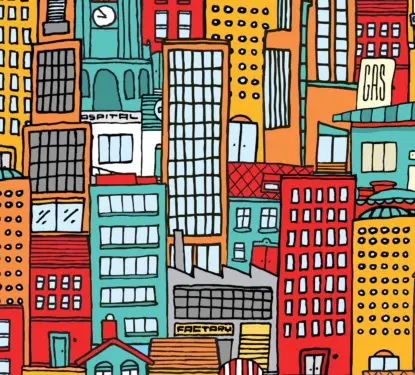Built Environment
Putting Human-Centric Lighting in the Hands of Designers for the First Time
September 13th, 2019A Sound Smart Building? Hearables in the Built Environment
August 22nd, 2019
Integration is Key to a Smart Building’s Success or Failure
“Successful digital transformation is like a caterpillar turning into a butterfly. It’s still the same organism, but it now has superpowers,” says George Westerman, a research scientist at the MIT Center for Digital Business. When digital transformation is done wrong, however, “all you have is a really fast caterpillar,” he points out, “and it’s hard […]

Human-Centric Lighting Still Has to Prove Itself
The latest report from Memoori estimated an $849 million global market for Human-Centric Lighting (HCL) in 2019 and predicts this to reach $3.5 billion by 2024, representing a 32.75% CAGR. While greater exposure to potential customers and reductions in the overall cost of systems will act as drivers for HCL adoption, the key factor for […]

Biophilia is Slowly Seeping into Smart Building Design
Biophilia is a growing and loosely defined topic within the smart workplace evolution. It relates to humans’ intrinsic need for nature but is often symbolized by the simple addition of indoor plants or photographs of nature on the walls, and therefore is often not given a significant amount of attention by facility management. However, the […]

The Endless Applications of Printable Energy Storage
By now, many have heard of printable electronics. Conductive ink is already being applied in asset tagging and logistics applications through RFID, within circuit boards to replace wiring, acting as radio antennas for vehicles, and even to protect surfaces in cold environments. As advances continue in printable electronics, the electrical conductivity of the ink is […]

How Better Power Management Helps Make Buildings Smarter & More Energy Efficient
Smart buildings are not just about reducing power consumption for cost saving and environmental reasons. Moreover, power management in smart buildings is not just about increasing the energy efficiency of those facilities. Power management is a critical part of many smart building systems but often not considered central to solving the challenges facing the future […]

Imagining A Circular Construction Economy For Buildings
We often talk about the fact that buildings account for 40% of total energy consumption but buildings are also a huge generator of physical waste. The built environment also consumes vast amounts of raw materials, which are generally only used once in their high-value form and often produced using an energy-intense production process. However, excessive […]

The Lighting Industry is STILL at a Turning Point

